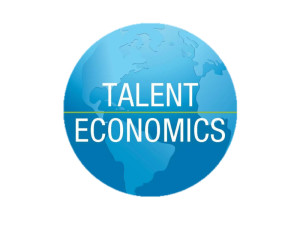
The Certified Talent Economist Program
Case Study
The Situation:
A diversified global company headquartered in Asia was struggling to get its operations in other emerging markets to the next level. In spite of offering top wages and rapid growth opportunities, it had to rely on expensive expatriation to plug many long-term talent gaps. Several global leadership programs, strategic hiring initiatives and long term assignments later, leaders at headquarters were annoyed with the lack of traction on the ground.
The Approach:
The Talent Economics approach was used to build a group of internal experts who were able to discover and fix several major talent strategy gaps in the company, including:
- Low local leader engagement – Almost all talent initiatives came from HQ and as a result had bred low ownership among local leaders on the ground. One of the first steps taken, involved getting country teams involved in crafting unique talent solutions which were owned and executed by the local leadership team.
- Mismatch between talent investment and business maturity – The current approach put a premium on consistency of solutions. On the ground, however, the talent needs of mature versus new business locations differed greatly. For example, some locations were best suited for graduate hires, others did not need them at all: needing an infusion of middle management talent instead. Likewise, some locations needed to invest in on-boarding support to underwrite new-hire success, while others urgently needed intercultural skills at senior levels.
- Mismatch between talent investments and growth – The executive team realised that a reliance on universal talent solutions had resulted in chronic under-investment in high-growth locations. It was soon clear they needed an entirely different approach to a business growing at an explosive 33% a year versus one which grew at a more stable 5%. In this case, the former needed significant sales bench strength expansion and a tripling of investment in middle management development.
- Other areas which formed a part of their new strategy included programs for leader (current skills) development, succession plans for high-risk roles and a differentiated EVP across a region.
The Result:
In the two quarterly talent strategy reviews which followed, it was abundantly clear that the conversation had shifted from issues and constraints to growth possibilities driven by strategic talent initiatives.
The CEO, who chairs these reviews, personally noted greater engagement levels from his regional teams, a distinct investment orientation in talent conversations and several new initiatives being piloted on the ground across both regions.
The Situation:
An international private bank, investing heavily in growing its wealth management unit at its Asian headquarters, found that well-heeled and mature wealth managers were in very short supply. The situation, in itself both unique and unprecedented, was playing out across the entire industry. An acute explosion in customer demand (the industry as a whole had reported an 112% increase in assets under management over 5 years) on one hand, was at risk due to a relatively inelastic supply of senior relationship managers across the industry, on the other. The current strategy of hiring overseas talent was failing due to cost and cultural differences. Simultaneously, an ugly bidding war had begun on the ground which was driving salary demands to unsustainable levels.
The leadership team unanimously agreed that their customers were suffering and new ideas were needed. Using the Talent Economics approach, the team which worked on the company’s overall talent strategy found several opportunity-areas. During the diagnosis phase, it was quite clear that this firm was addressing long-term issues using short-term solutions. This kept the wheels in motion, but did not address the core issues of poor talent supply and cost escalation.
The Approach:
Using the PITA investment framework from the Talent Economics toolkit, an internal team of Talent Economists helped build a short and long term battle plan which included:
- Hiring non-traditional talent (doctors, lawyers, management consultants) and investing in their financial skills development. With strong mentoring support, many went on to become top revenue producers within 18 months.
- Designing a customised financial diploma with a local university. This diploma was offered exclusively to mid and back office employees who wanted to switch to front office roles.
- Investing in technology adoption and training, which made several routine data input and reporting tasks easier, thereby raising average productivity within the current team.
- Investing in employer brand schemes – a critical but often overlooked imperative in hot job markets. This included among other things, hosting an annual summit for women in finance, which was attended by hundreds of women bankers- including many wealth managers – from across the industry.
The Result:
The results were very positive and evidenced at the end of 18 months through: lower turnover. higher customer satisfaction and greater internal mobility of talent into revenue producing roles.
To know more about this program, please click here.
Read our program primer here.
Download the full brochure here.
Register here.
